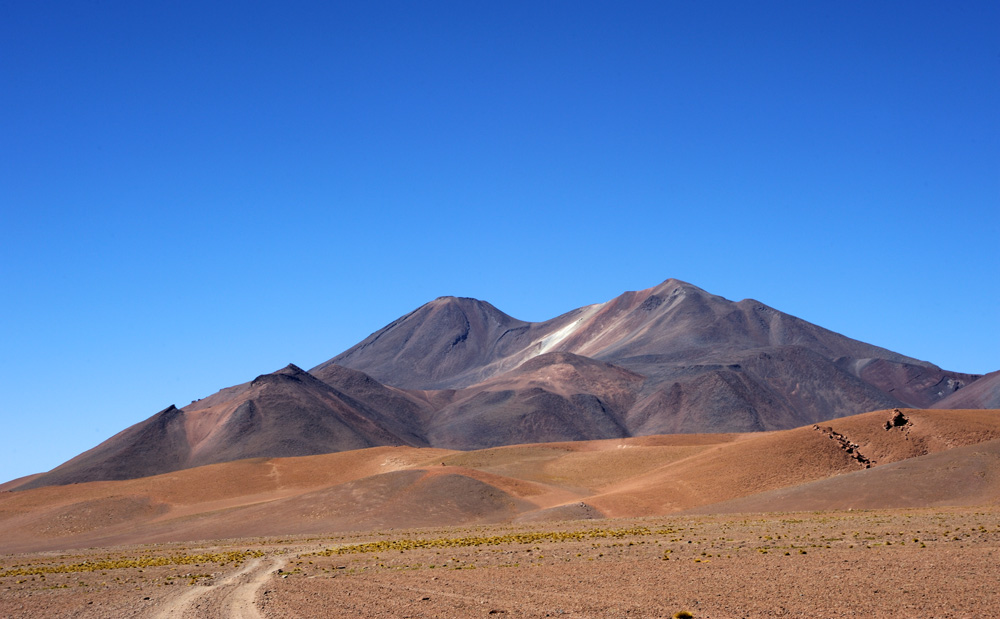
Atacama. Laguna Lejia
Atacama. Laguna Chaxa. Fabian’s lizard and other occupants
Atacama. Laguna Chaxa. Flamingo
Atacama. Horned coots
Atacama. Cerro Toco
Atacama. Vado Putana
Atacama. Geyser Valley El Tatio
Atacama. San Pedro and Laguna Cejar
It was time to climb the second mountain, and we choose Lascar volcano (it is difficult in this place to find a mountain that is not a volcano). 5600 metres. It is also not difficult technically, just follow the trail to the top. The feature is that Lascar is an active volcano. Very active. It is highly recommended to check its current status on special site right before climbing because to be separated with your own car with lava flow is fan only in the moment of recollections writing. We checked, it looks fine, so we followed our plan.
The driving to Lascat does not fan at all, 3.5 hours one way, and most time it is a very bad unpaved road. After the ascent of Altiplano, the road transforms into the number of tracks. For driving they are even more pleased that the road if you only chose the correct one. Despite driving conditions, we enjoyed the beauty of the desert around.

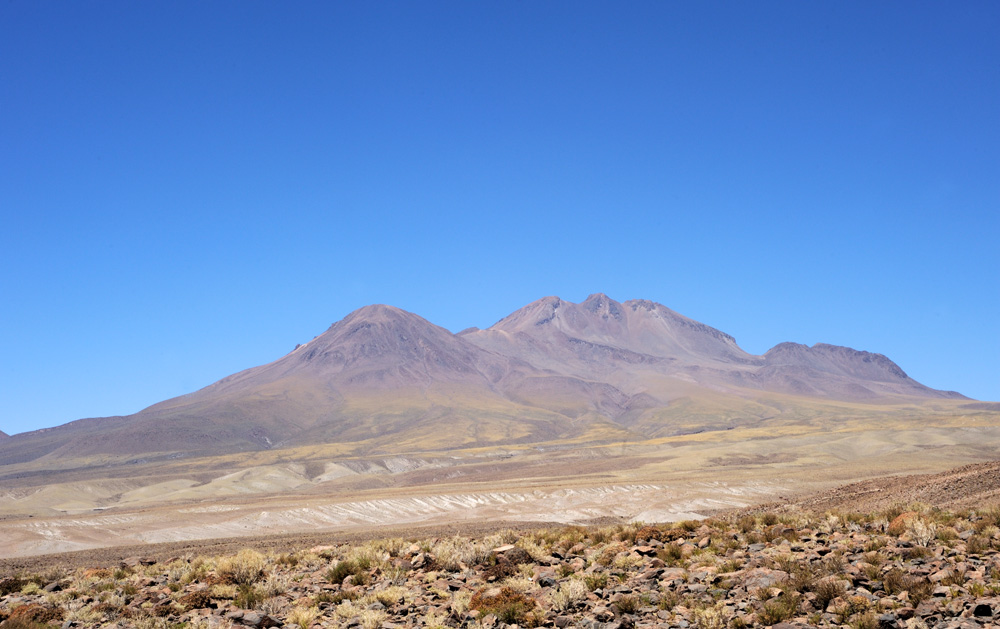
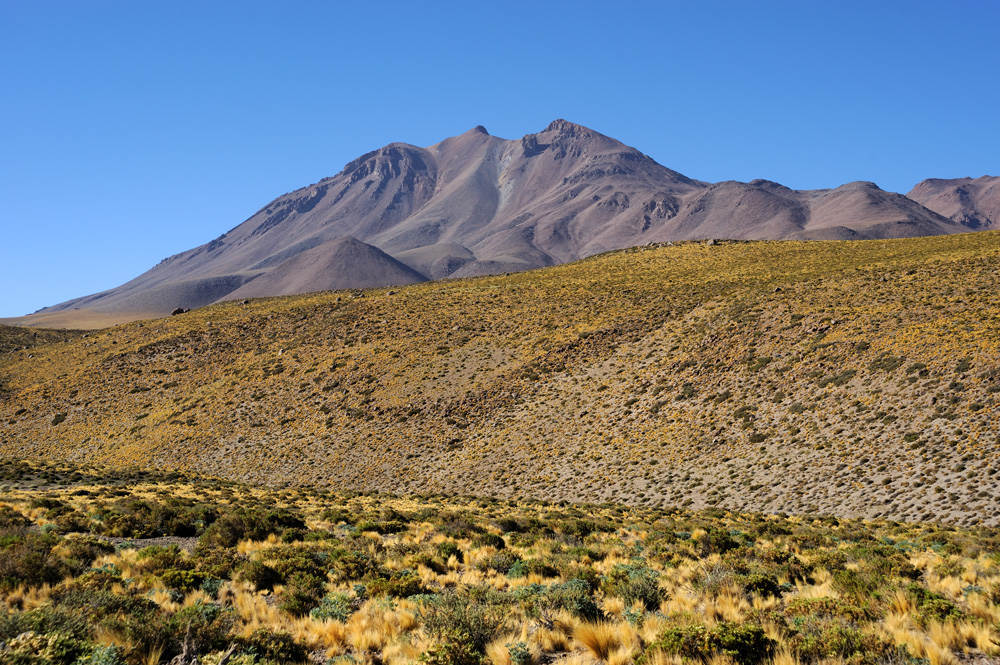
High-altitude salt lake. From this point, the rad becomes the set of tracks.
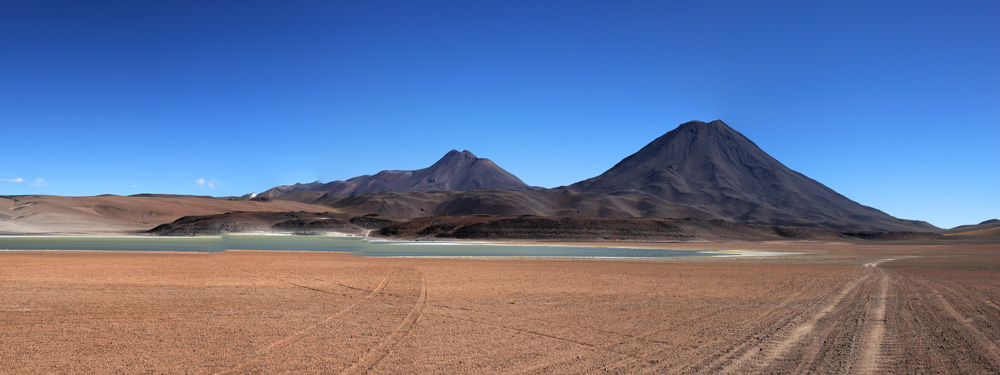
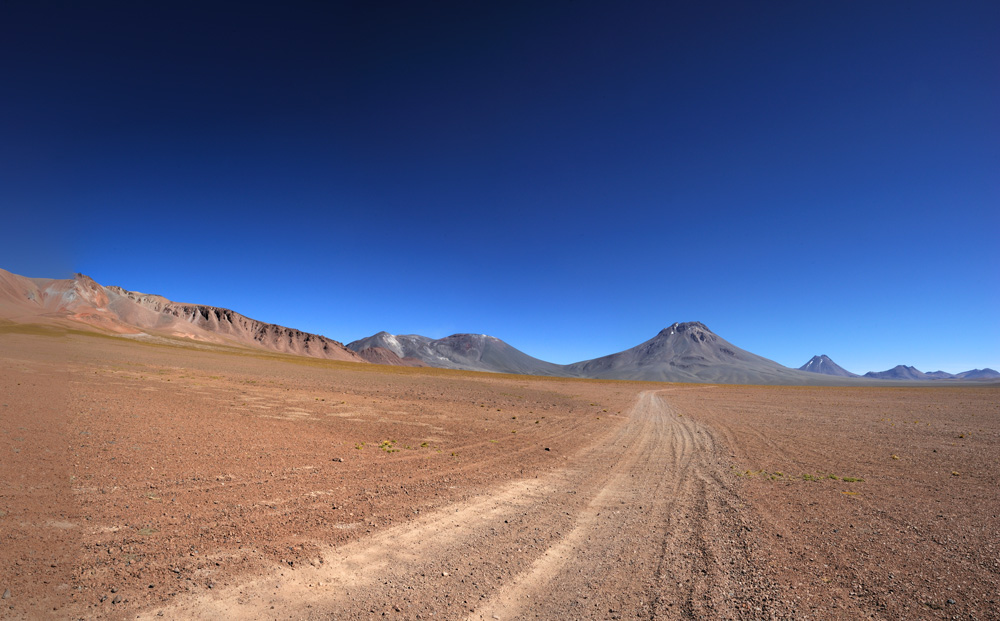
Guanaco
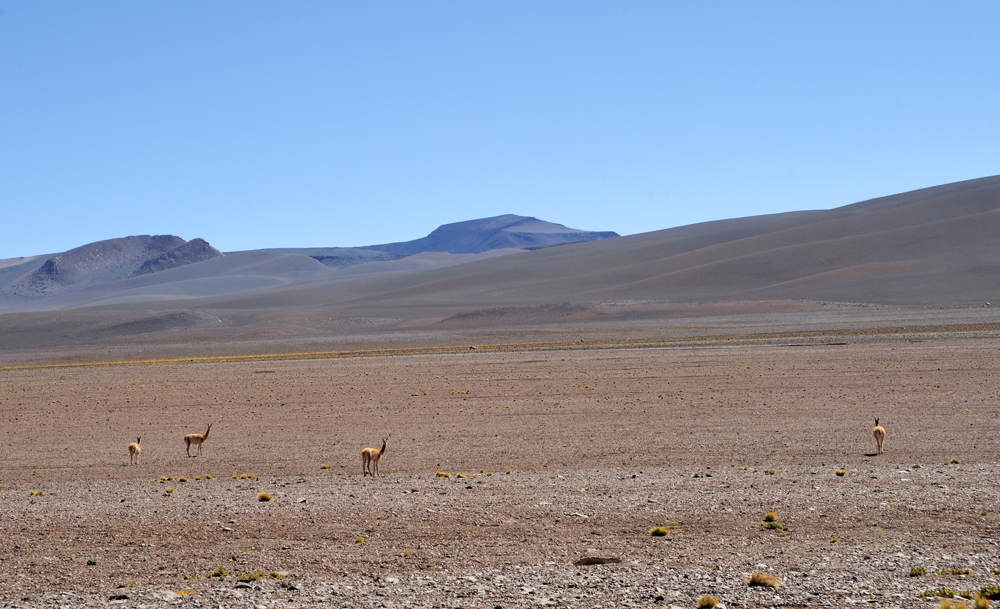
On the highway, just before the turn to the unpaved road, we saw the sign – Nandu crossing.
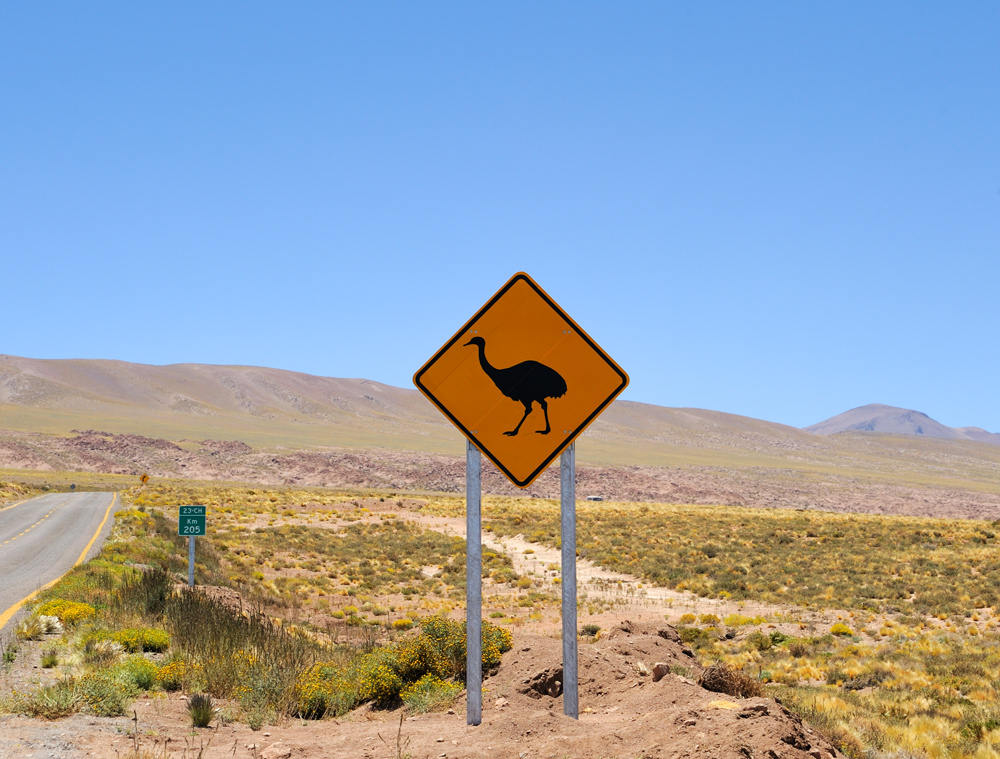
I was surprised. High altitude, the desert, and nandu, really?
So, we drove on Altiplano, already near our volcano, the elevation is about 4500 metres, everything dry and empty around, and we saw nandu! With eight chickens! They just run somewhere. Unfortunately, they were too far, so I don’t have a good photo of them.
Later I found that apart from well-known common big nandu that lives in South-American pampa, there is a much rare Darwin’s or lesser rhea ака Rhea pennata that prefer more exotic places. One population of Darwin’s rhea lives in Patagonia and another on Altiplano between 3000 and 4500 metres of elevation.
Near the mountain.
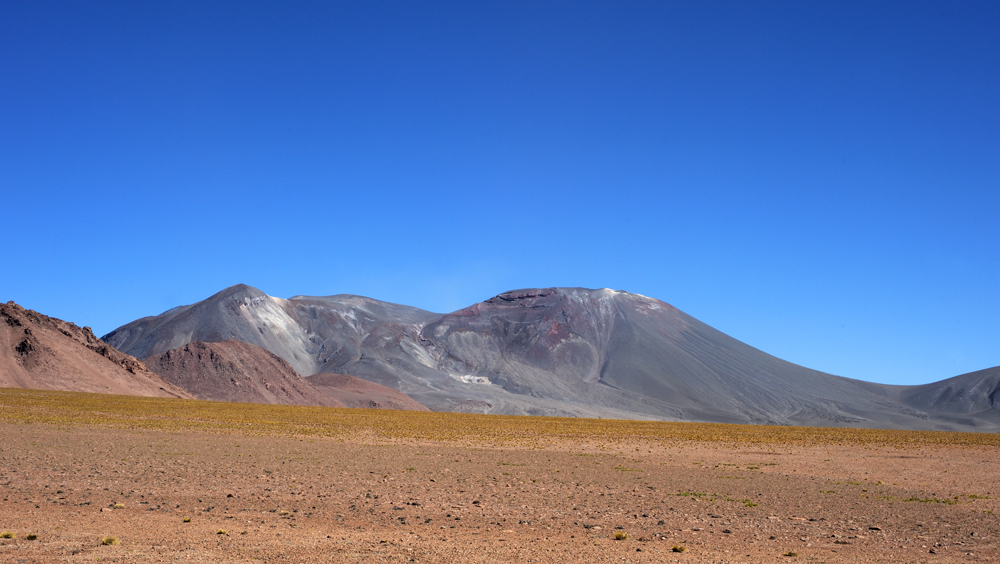
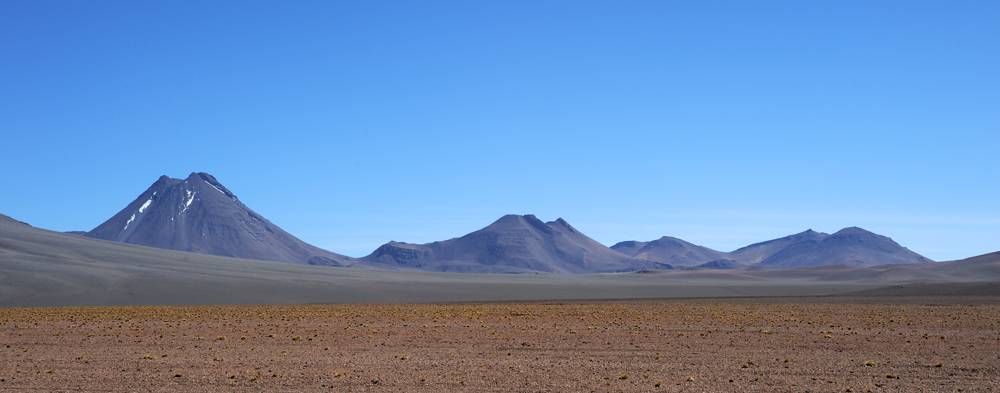
The road goes up to 5000 metres, but our car decided that its too much, and rejected climb the uneven steep slope after 4800. So, we continued on our own.
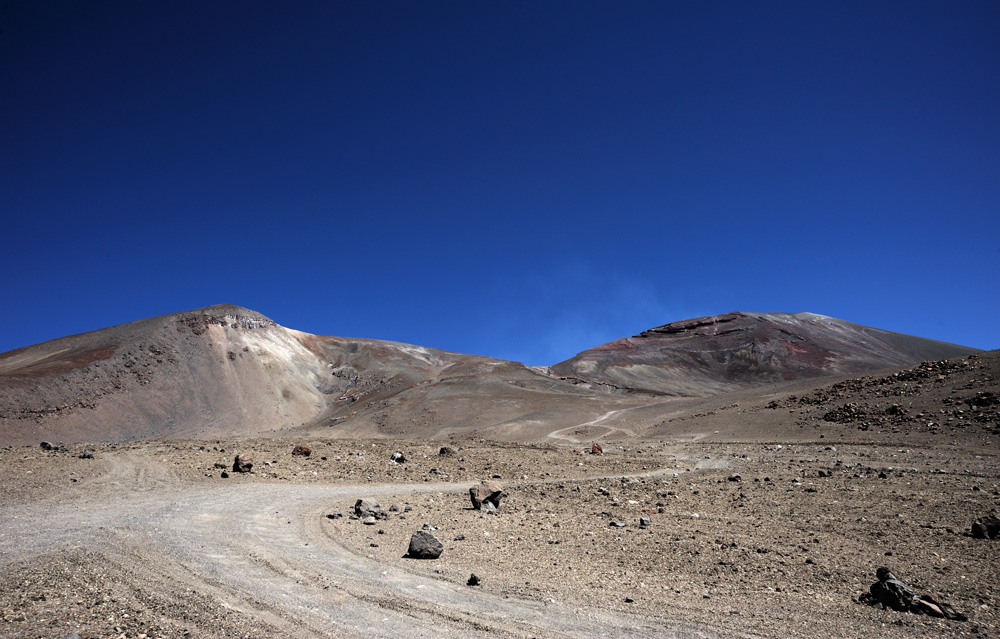
The tracks that lead to the lake.
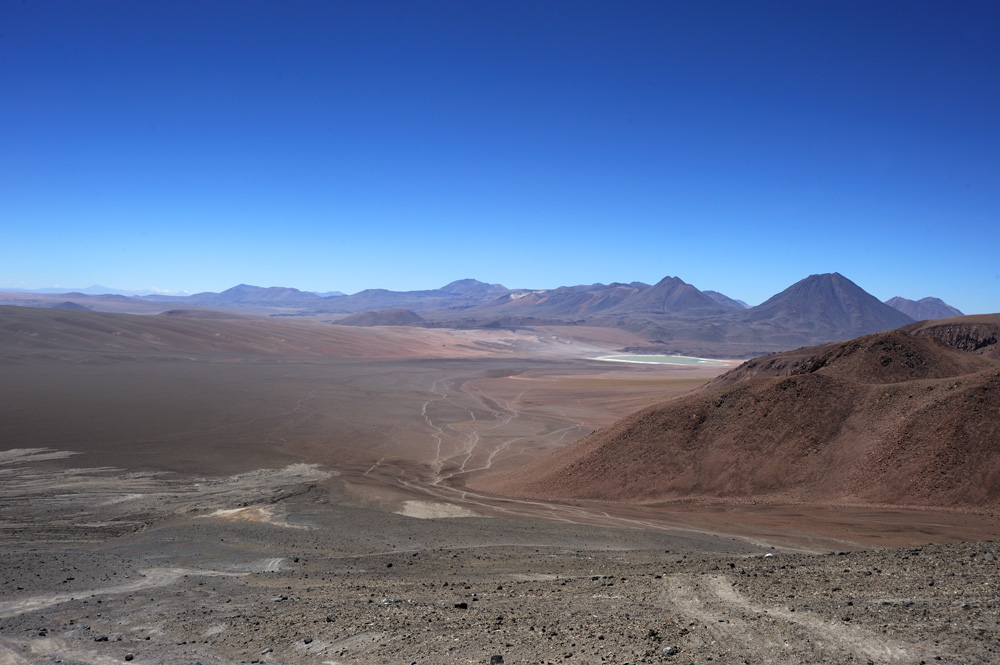
Came to the cars of other groups.
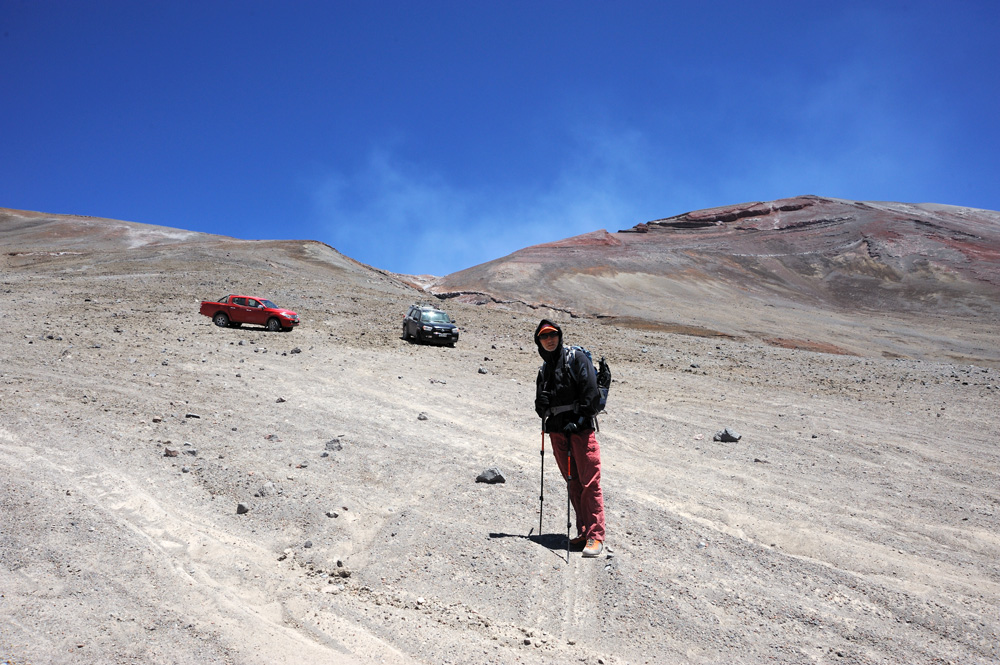
The desert below.
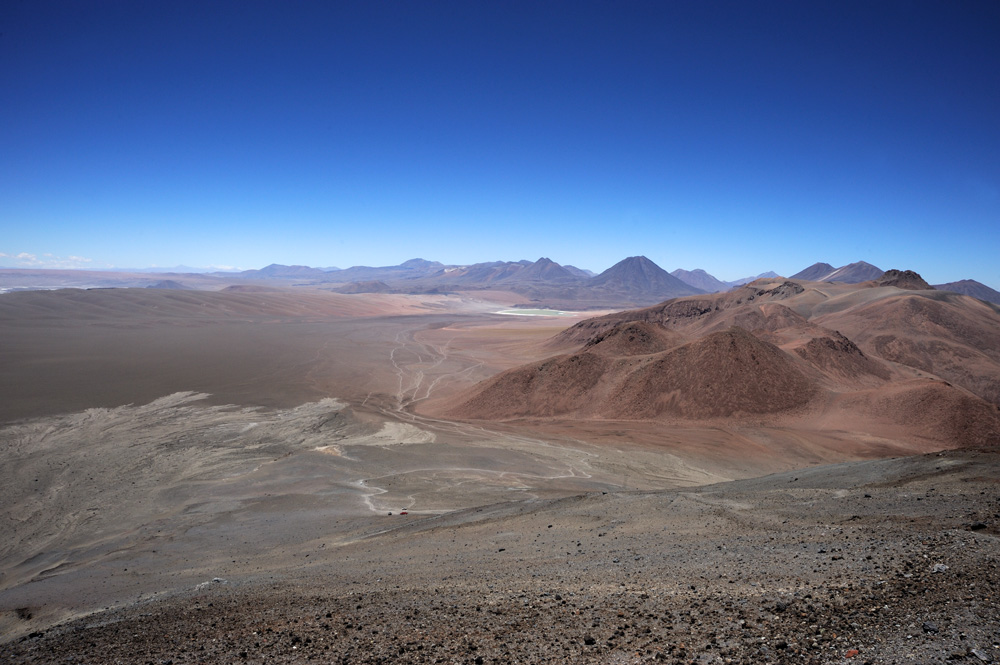
Besides the possibility to erupt at any moment Lascar is known for its constant and generous production of sulphur dioxide. Huge gas flows always ascents from the crater, and the crater is not small at all. When wind coming from the crater side, the climbing becomes dangerous because of the high possibility to be poisoned. Even when the wind is not strong, but still from the crater side, company guides lead their clients only to the crater rim, not to the summit (the last hundred meters of elevation gain should be ascent by the trail along the crater rim where you chestfully enjoy gases).
That day was not bad, but the air was still stinky, we got headaches, and it was difficult to breathe and walk. Two commercial groups which cars we met, turned back on the crater rim. We were lucky: when we came to the crater rim, the wind changed its direction, it is immediately become easier to breathe (well, how it can be easy on 5600), and we almost run to the top.
On the top.
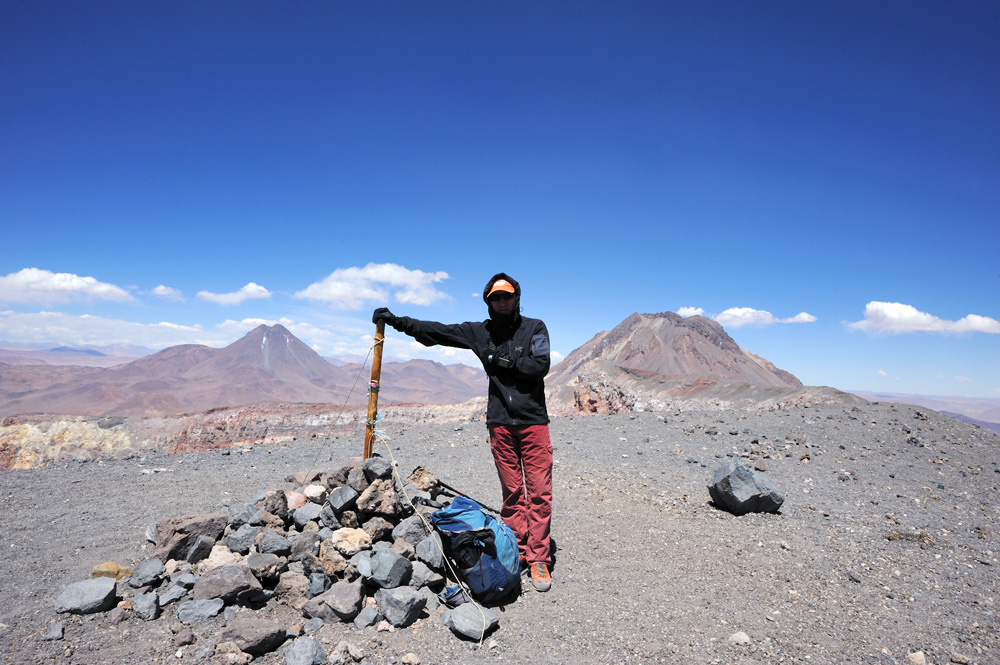
There are plenty on different stuff on the summit (and I believe that not only on the summit) to monitor volcanic activity and solar battery for energy for all these stuff.
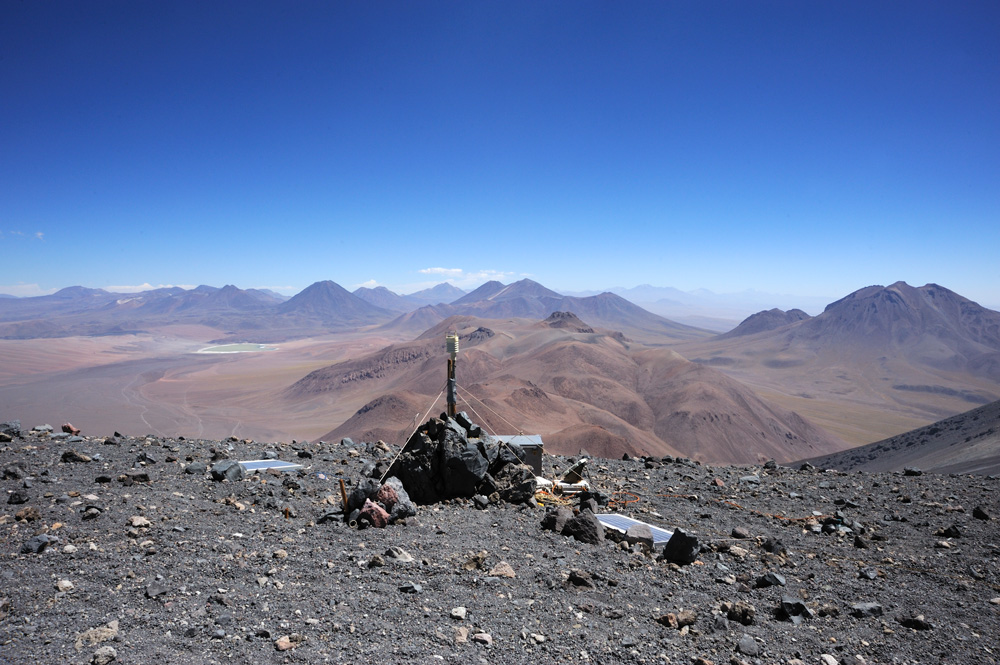
Surroundings from the top.
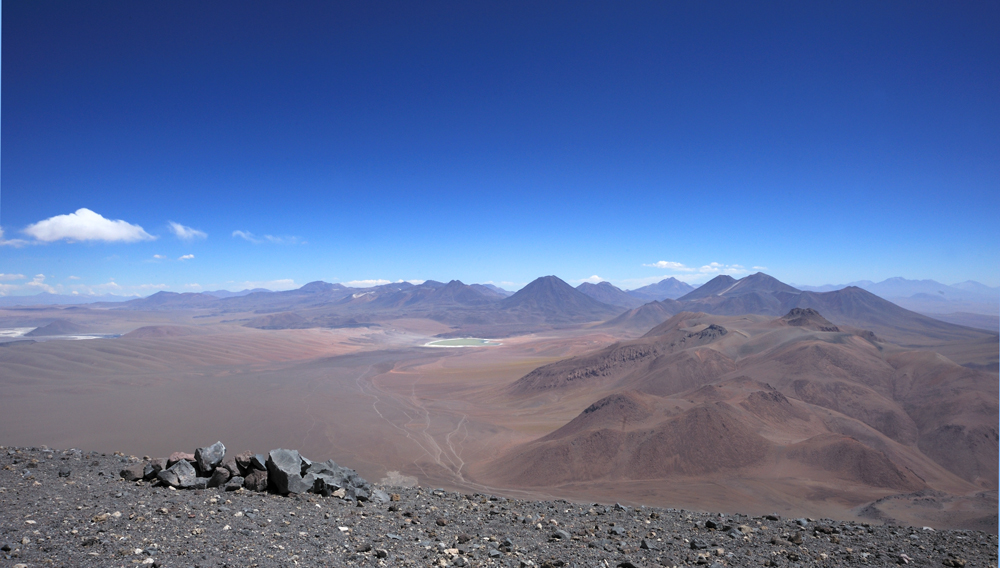
Crater
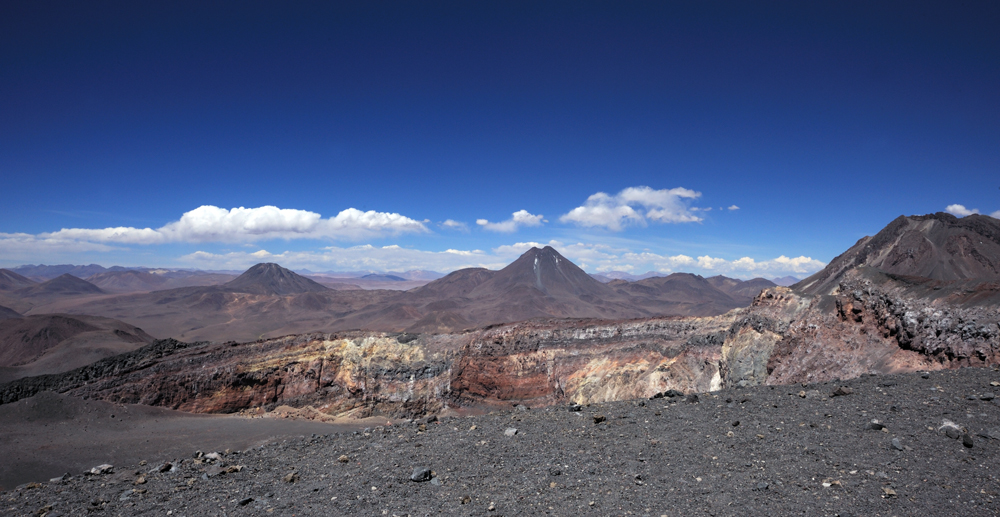
Crater actively produces plenty of stinky gases. Finally, we found a mount stinkier than Hood!
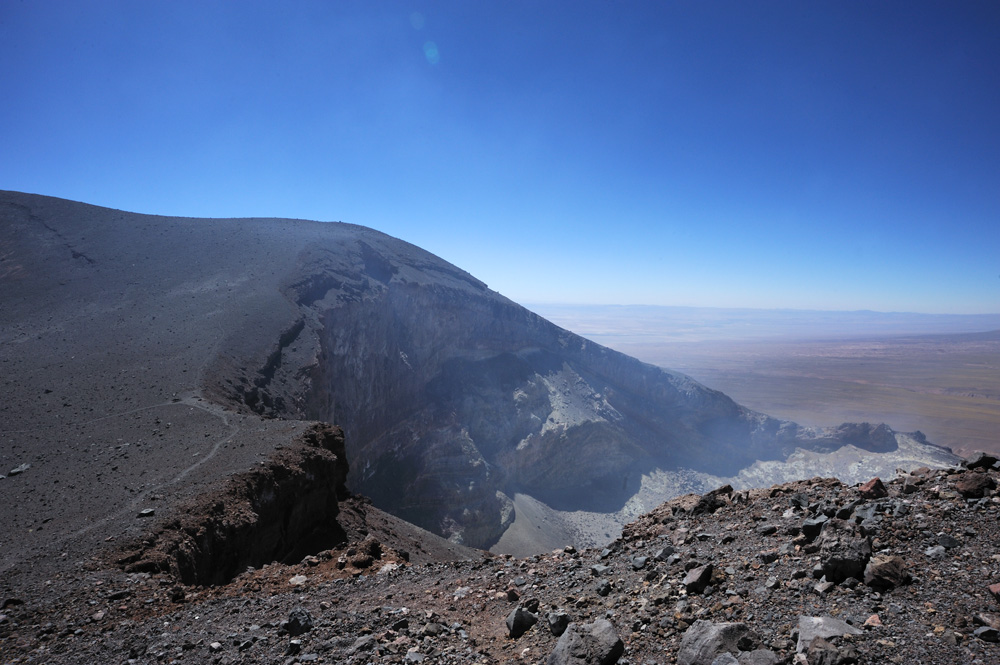
On the way back. These red slabs look very similar with ones on the Shasta.

The ascent took five hours, the descent one and a half.
We drove back. First, to the lake
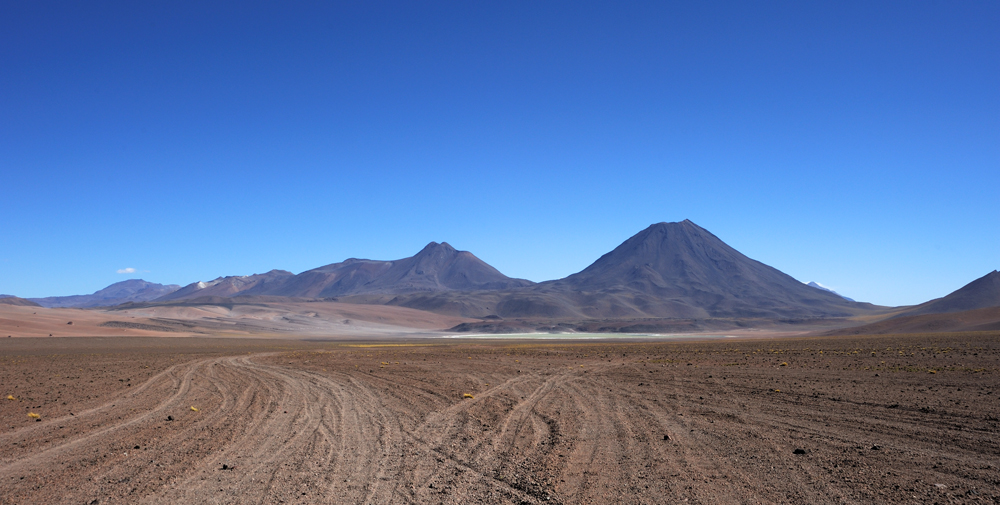
with flamingo.
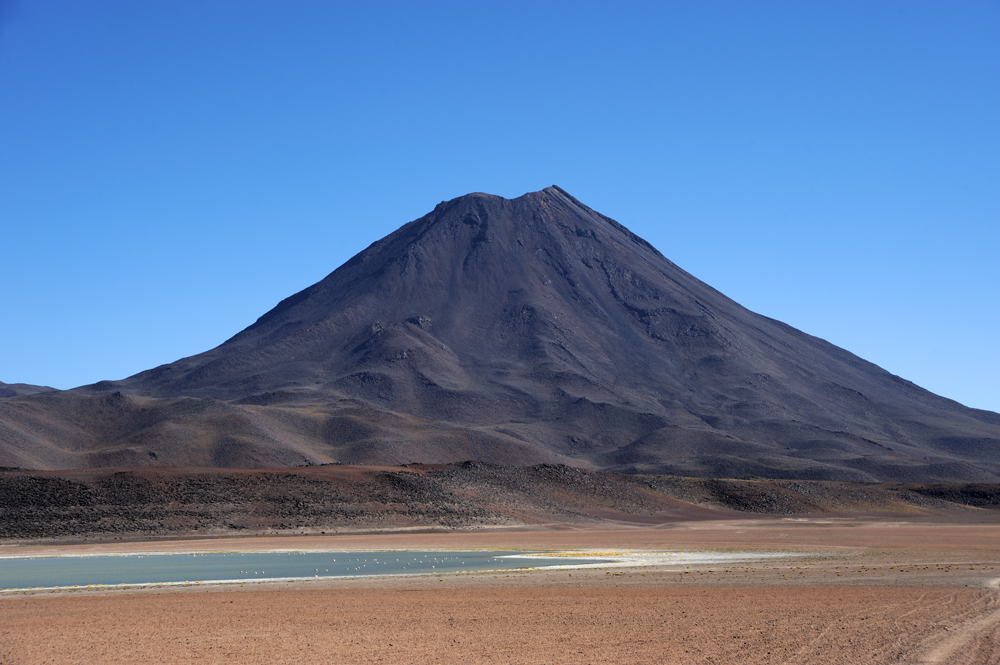
And future down, enjoying the view around.
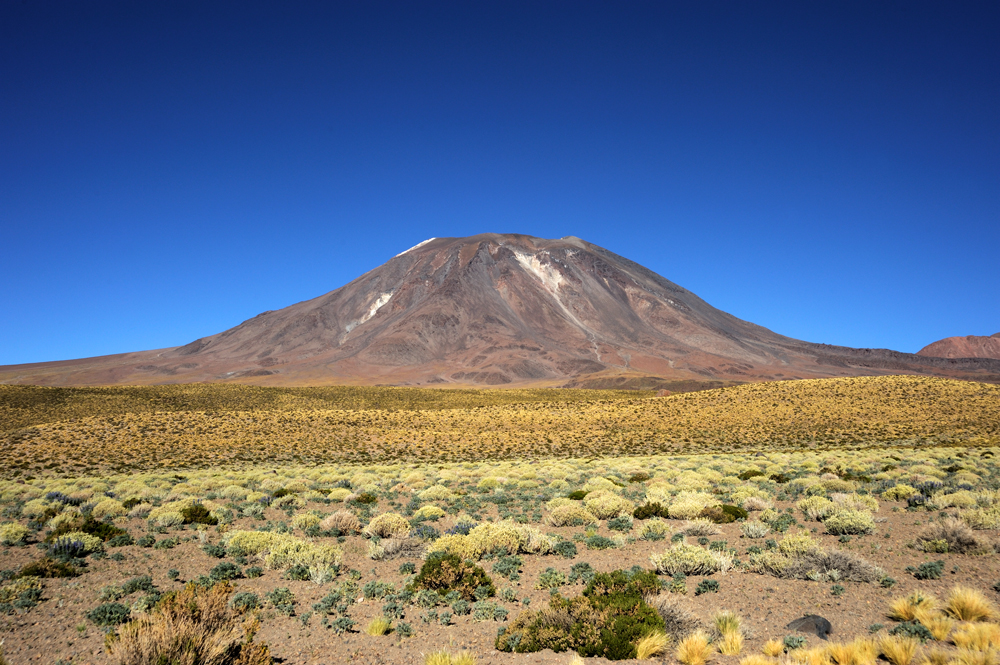
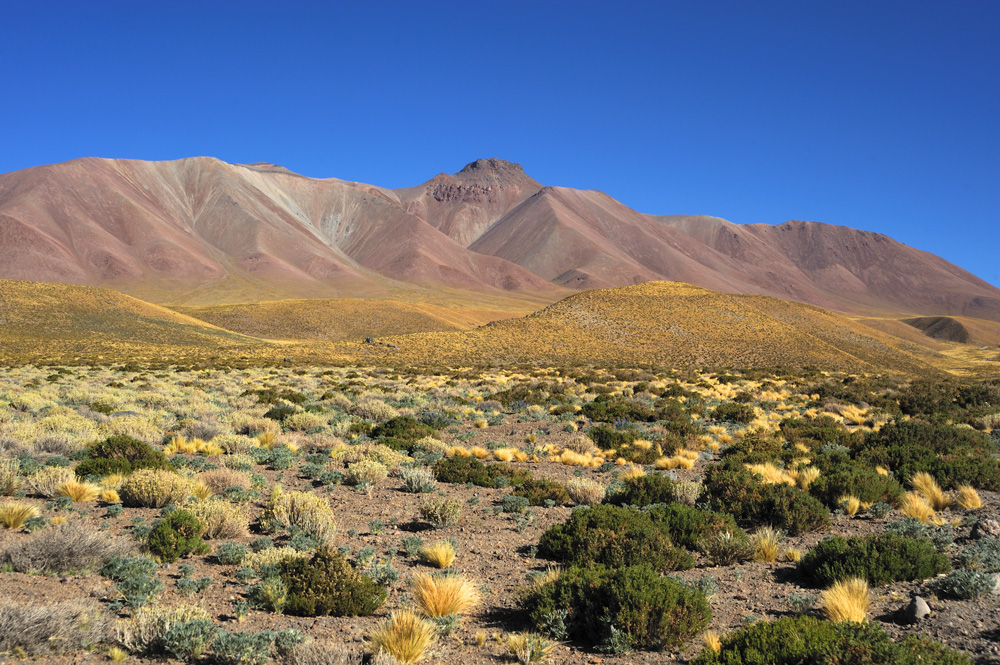
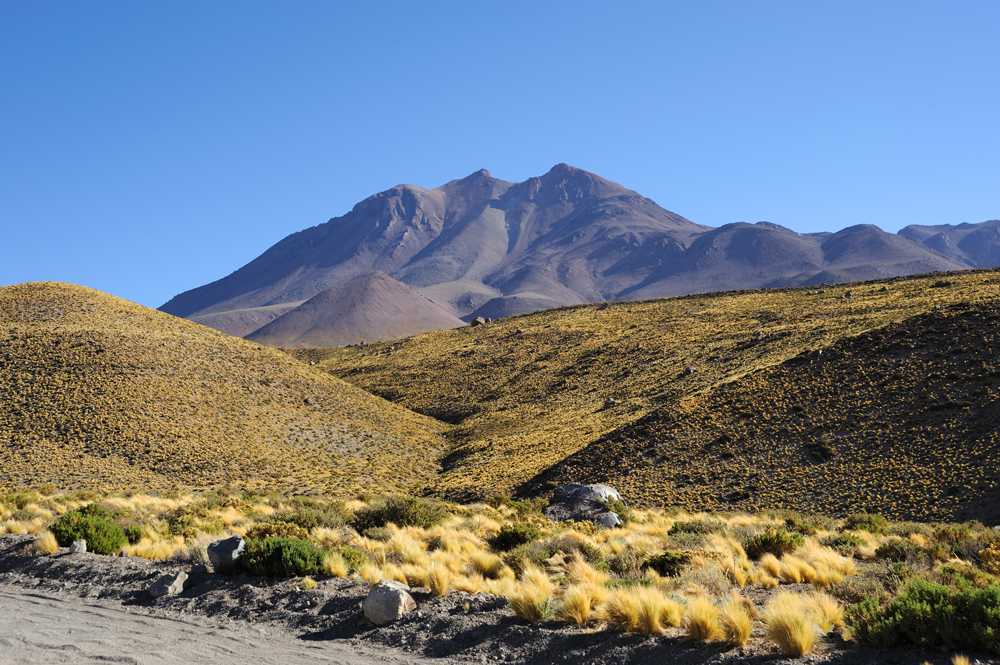
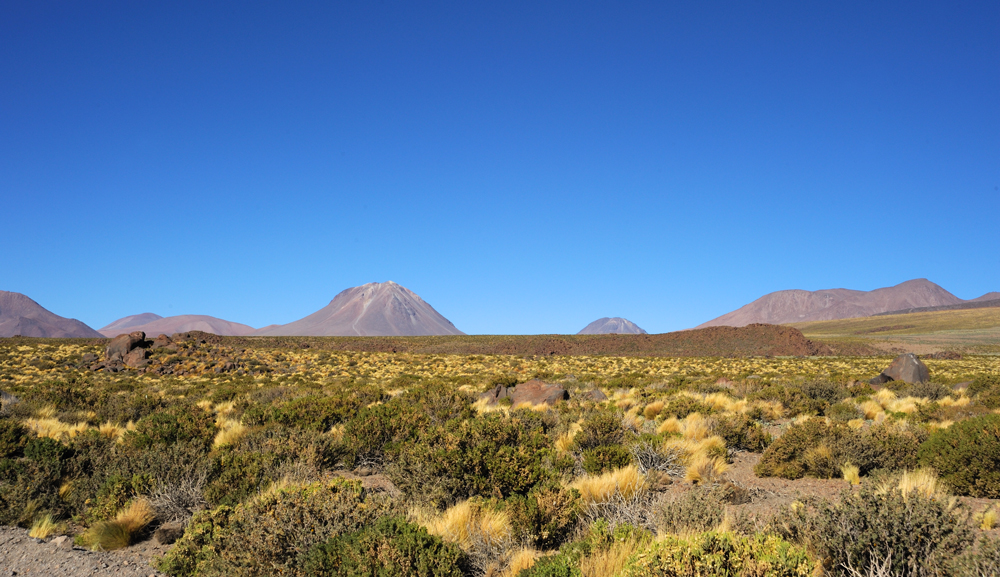
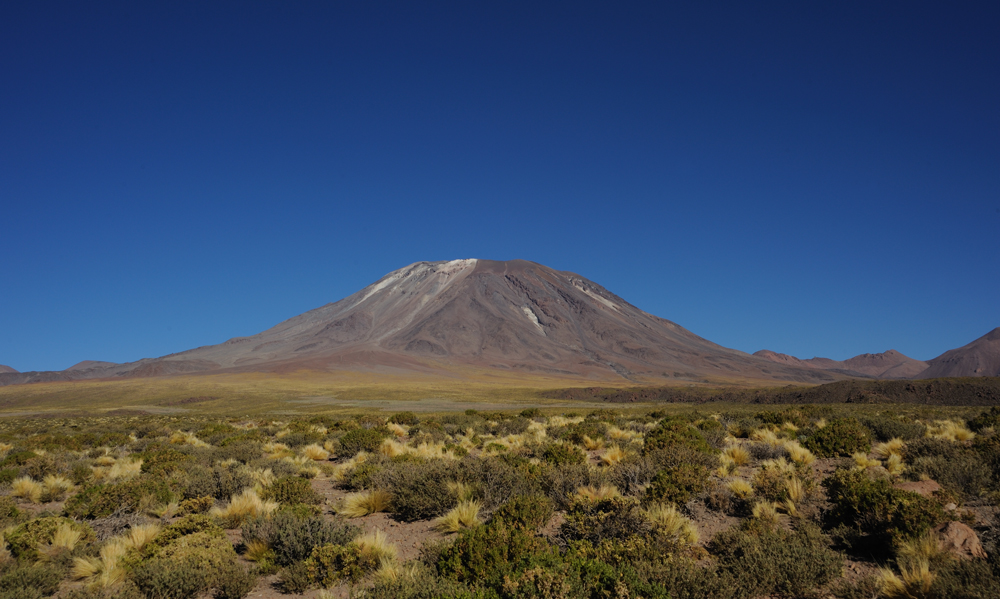
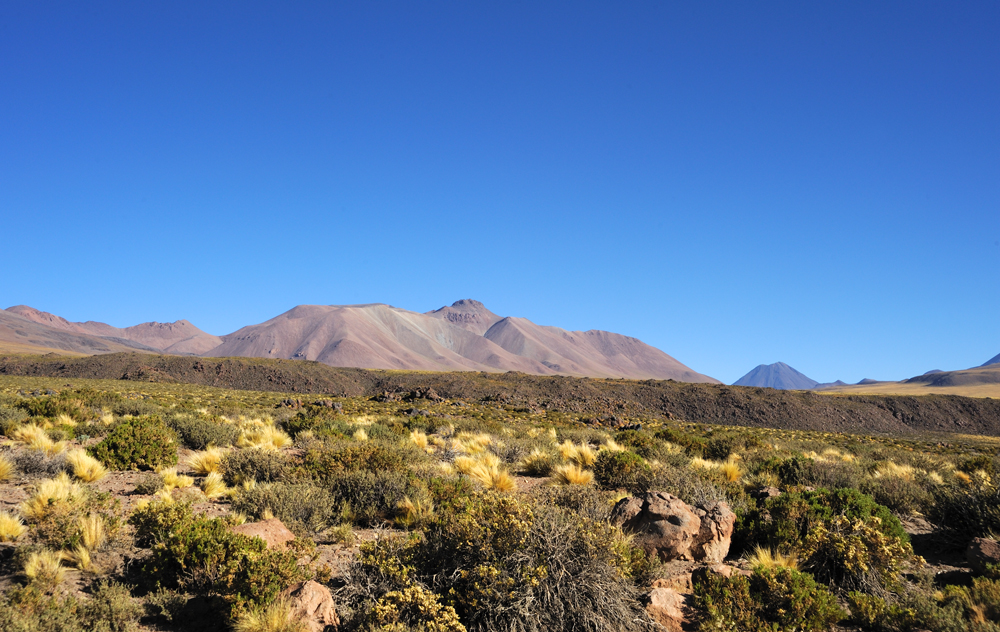
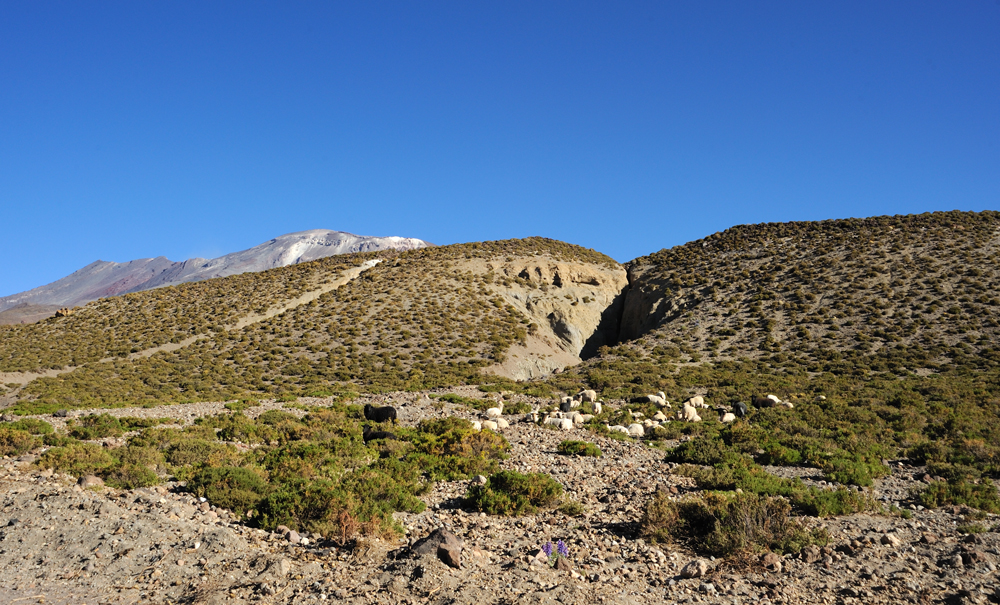
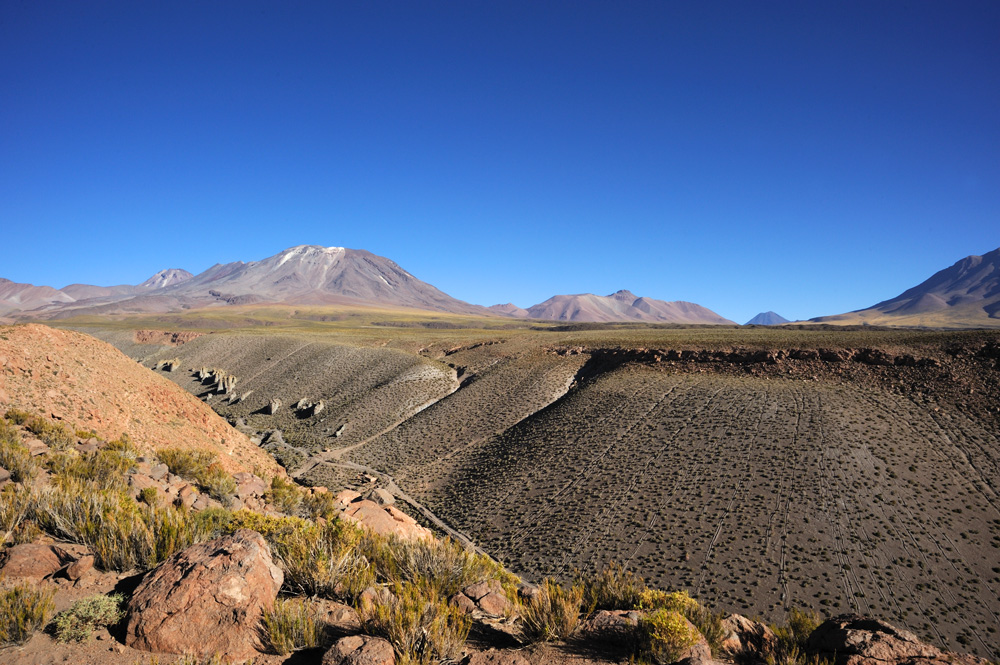
At this moment our car decided that it is enough for her. That she is a gentle French SUV, not a Japanese off-roader, and doesn’t need to behave like the last one. At first, she started to rattle and pretended that she lost some of her parts. Cannot blame her, it was a really bad road, and she is really the gentle French SUV. Even on the highway, she behaved unstably. Finally, she said that she doesn’t have enough some mysterious AdBlue, and if we do not provide it immediately everything would be very bad. She said it in Spanish, so we could only fantasise what she wants and how she would realize ger intimidations.
Well, she made her way to the hotel anyway. After an internet search, I got a lot of new knowledge about diesel engines. At least, about European diesel engines. They produce nitrogen monoxide that is toxic. To prevent environment poisoning the special agent AdBlue must be used. It is just a urea solution and it converts poisonous nitrogen monoxide to the harmless dioxide. This process is required a lot of urea. These cars have a hole for urea pouring just near the hole for diesel. In Chile, the urea solution under the name AdBlue is sold in all gas stations in 10- and 20-litres canisters like windshield washer in our gas stations. Interesting, that Japanise either makes diesel engines that don’t produce NO, or they don’t’ care about it, however, Japanise diesel cars don’t require urea and even don’t have a place for it. And it is not connected with country requirements, we rented a Japanese car for Ojos, and cleared the question.
Next day was lost. We called the rental office and tried to find out how to solve the problem. They don’t have an office in San Pedro, the closest one in Calama, so driving to the office and simple car exchange was not an option. And we wanted the working car as soon as possible, we had only three days more in San Pedro. First, with permission of the rental office, we re-filled AdBlue ourself. It is a trick, by the way, to re-fill liquid with hight viscosity via a very narrow tube. And it didn’t help anyway, the car required more and more AdBlue and promised to stop forever. Finally, the rental car brought the new car and took the old one away.
The car was a little sister of the old one, and her destiny was predetermined.
To be continued…